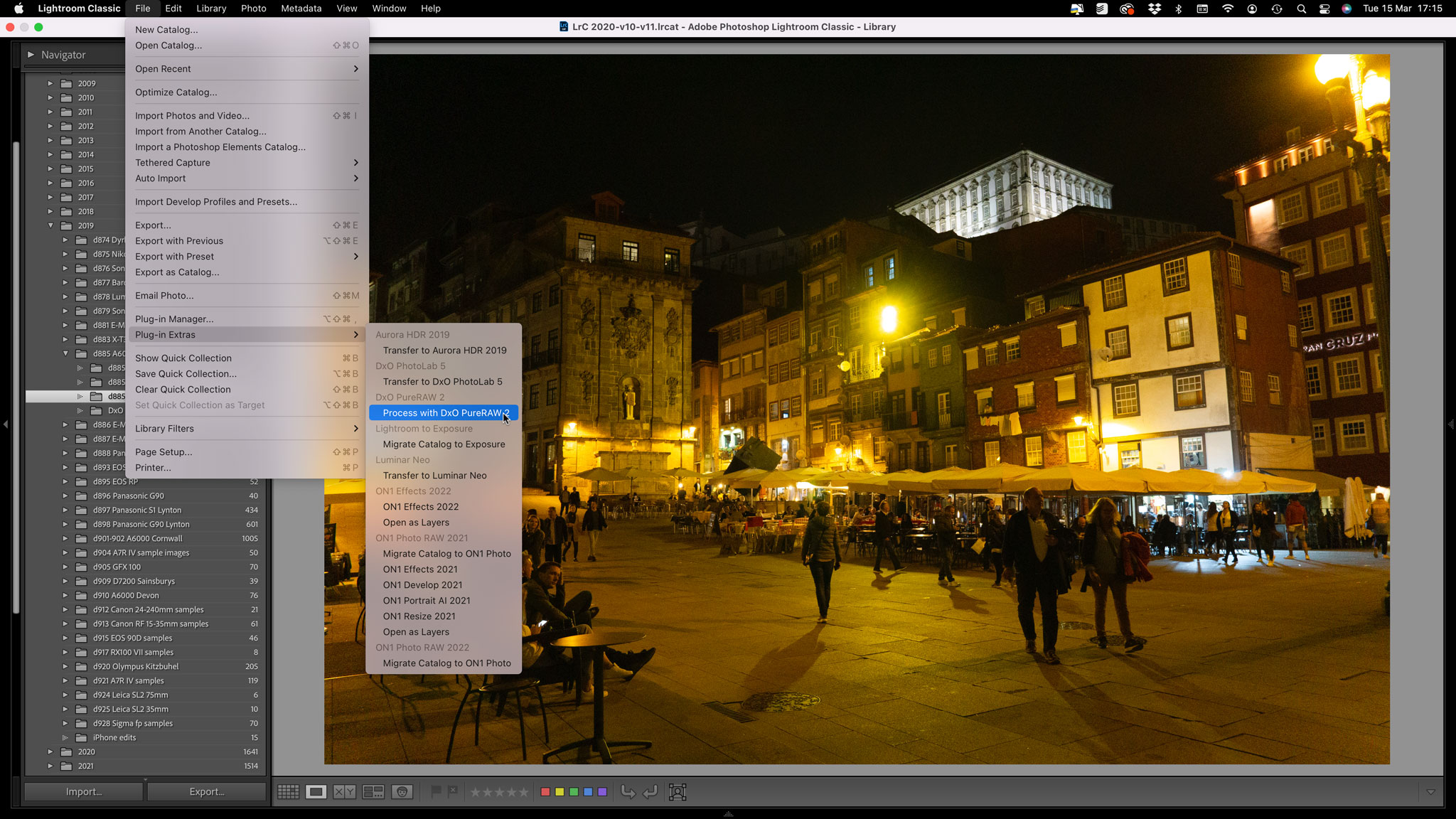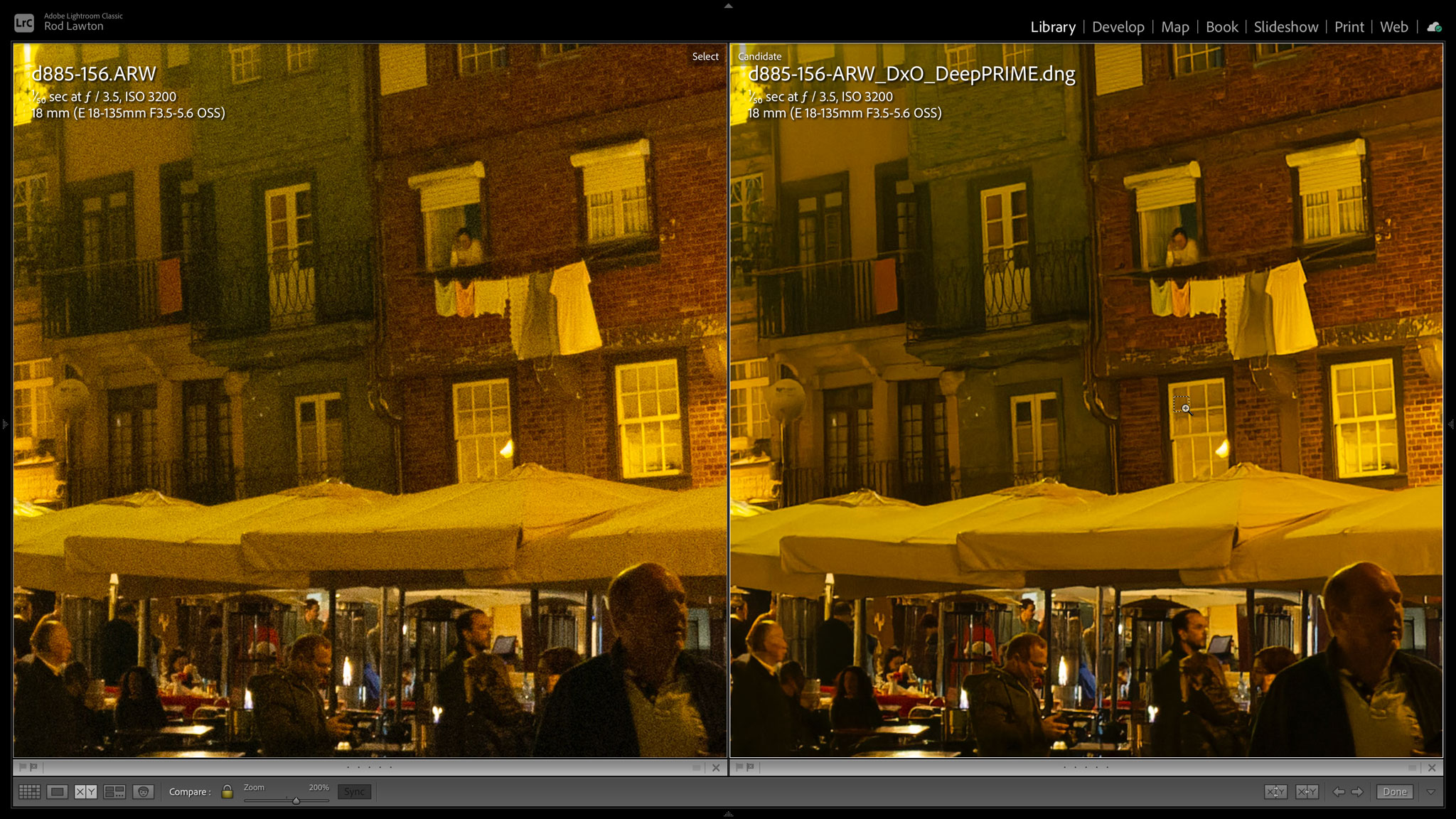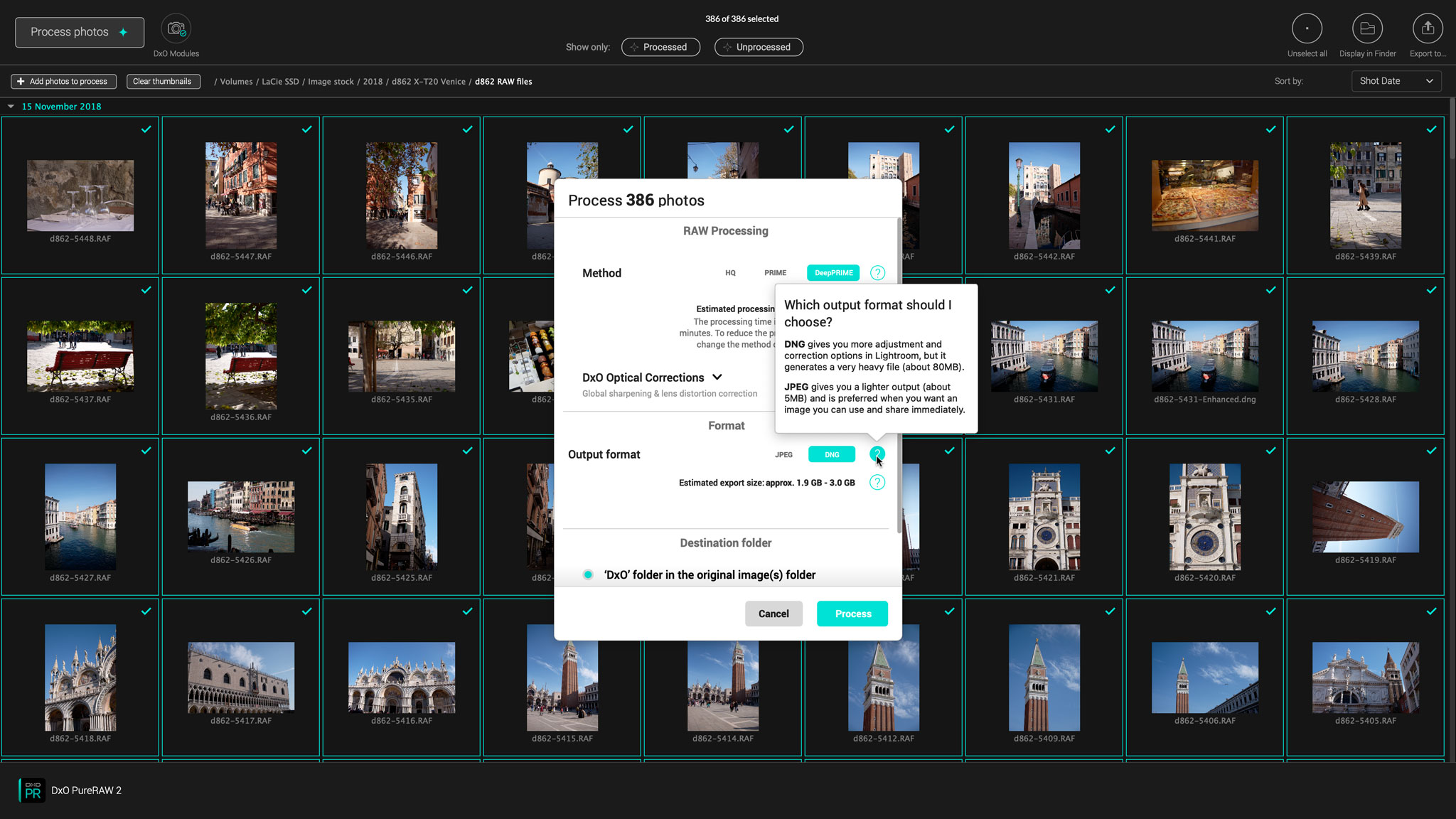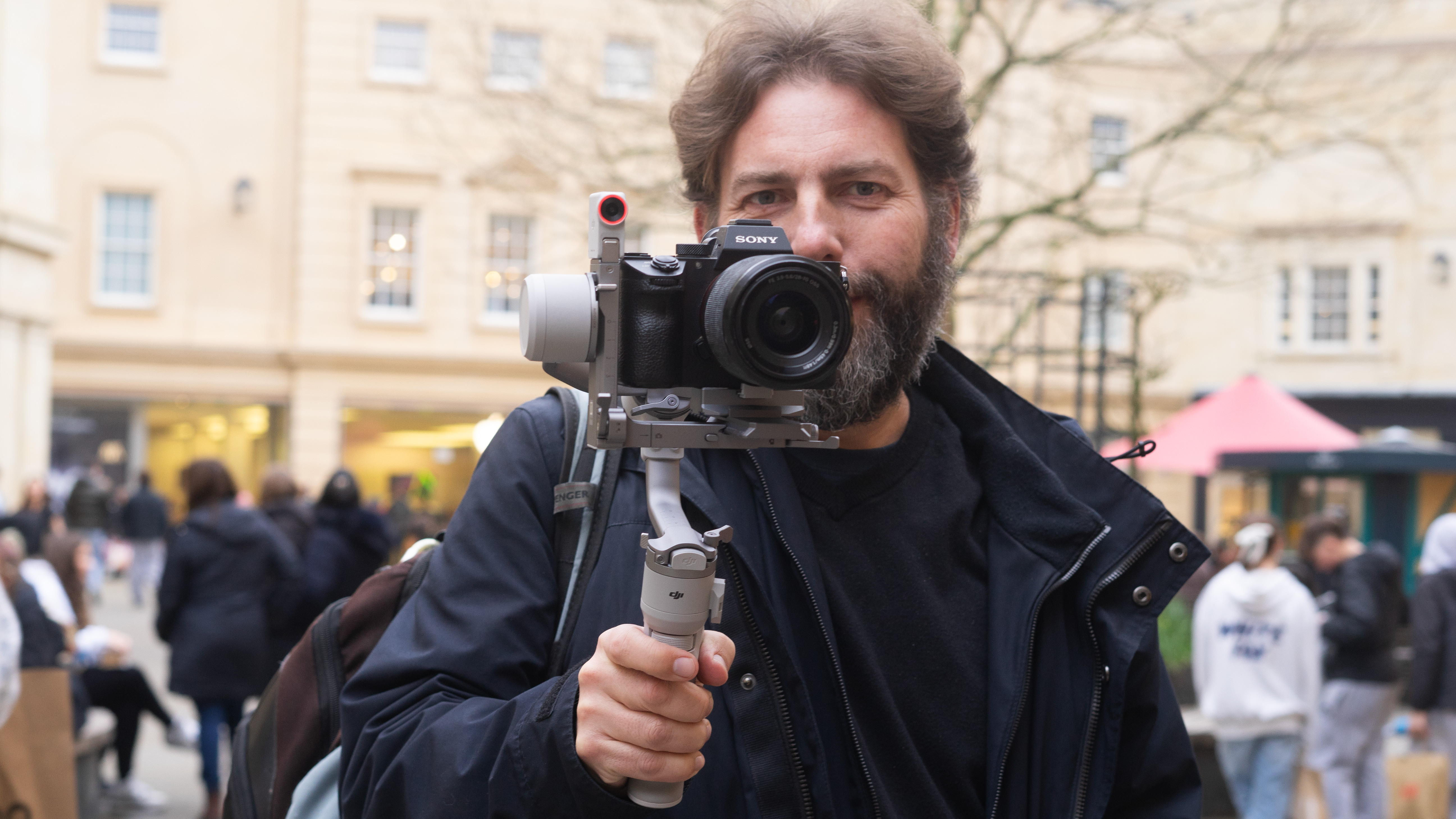Digital Camera World Verdict
DxO PureRAW 2 is for anyone who’s even slightly pernickety about raw image processing. Its exceptional DeepPRIME noise reduction may only be obvious at higher ISOs, but can still subtly improve regular images, along with DxO’s very good lens corrections. It’s not cheap but, as they always say, quality never is.
Pros
- +
Simple conversion workflow
- +
Lightroom Classic integration
- +
Excellent lens corrections
- +
Extraordinary high-ISO quality
Cons
- -
Linear DNGs 2-3x larger than raws
- -
Processing takes time
Why you can trust Digital Camera World
DxO PureRAW 2 takes the raw image processing and denoising technology in DxO’s flagship software, PhotoLab 5, and puts it into a simple image conversion utility. The idea is that you get all the quality of DxO’s processing but in a simple batch-processing utility.
PureRAW 2 can output processed JPEGs, with noise reduction and lens corrections applied or, more interestingly, Linear DNG files. These are like part-processed raw files that behave just like regular raw files in your software, but have DxO’s own demosaicing and denoising process pre-applied.
Key features


PureRAW 2 can be used as a standalone program, as a tool available directly in the Mac Finder or Windows Explorer or – perhaps most significantly of all – directly from within Adobe Lightroom Classic.
DxO acknowledges the huge popularity of Lightroom and the fact that many photographers won’t want to switch software or workflows, so this new version of PureRAW tackles that with a new export plug-in that allows you to round-trip raw files from within Lightroom to DxO PureRAW 2, where they’ll be converted to Linear DNGs and returned to Lightroom as a new file alongside the original.
This new workflow means that you don’t have to batch process raw images in PureRAW before importing them into Lightroom, and you can be much more selective about the images you want to enhance.
With low-ISO images, you may not see much difference between Lightroom’s raw processing and DxO’s – at least not enough to worry about. But at medium-high ISOs, DxO’s processing advantage quickly becomes apparent. Adobe’s raw processing might the most convenient option for many photographers, but it’s pretty poor at balancing noise and detail at higher sensitivity settings.
Another new feature in PureRAW 2 is Fujifilm X-Trans support. This has been a long time coming, and at last opens the door to Fujifilm camera users. X-Trans support was introduced to PhotoLab 5 in ‘beta’ form, but its finished and fully-integrated into PureRAW 2.
Interface and usability


PureRAW 2 is extremely simple to use, partly because it doesn’t offer any image adjustments, just a conversion process. All you have to do is tell it which images you want it to convert and the conversion options you want – typically either JPEG or Linear DNG, and where you want the new images to be saved – and set it to work.
DxO’s DeepPRIME processing is certainly faster, but still not fast. You can expect to wait up to, say, a minute for each image to be processed – but this will vary considerably depending on your hardware. It’s only a one-time operation, though. If you’re converting a whole folder of images you can get on with something else while it’s at work, and if you’re sending an image from within Lightroom, it just means a short delay while you wait for it to come back.
But what happens if you’ve already done some editing in Lightroom and only then decide that you need a superior Linear DNG version? This is where it gets clever – the original (unedited) raw file will be send to PureRAW 2 for processing, and when it returns the editing metadata applied to the original will be applied to the DNG. You keep all your edits, even if you use the PureRAW conversion after you’ve made them.
Quality of results


Even at low ISO settings, you can often see the difference between PureRAW’s Linear DNG files and Lightroom’s own raw processing, often as reduced noise in blue skies and other areas of even tone. DxO’s lens corrections are extremely good too, so that even if you don’t notice any difference in distortion correction, for example, a closer look at the edges of the image will often reveal sharper detail in the DxO version. The worse your camera gear, the bigger the potential gain!
It’s at medium-high ISO settings that the differences become obvious, and at super-high ISOs where Lightroom’s now processing can produce noise like marbles, DxO’s processing is uncannily sharp and noise free. It leaves you checkin the EXIF data to make sure they are actually the same image.
There are a lot of software publishers making a lot of claims about their noise reduction tools, but DxO insists it’s the only maker to combine raw demosaicing and denoising in the same process – and DxO’s high-IS noise reduction is spectacular. There’s no smudging, no ‘watercolor effect’, just more detail than you ever imagined your high-ISO raw file actually possessed.
Verdict

DxO PureRAW 2 is not cheap, it does demand a shift in your workflow, and its Linear DNG files are 2-3 times larger than the raw files they’re created from (it’s because they’re ‘demosaiced’ into full RGB images). It’s not for everyone.
But if you’re obsessed by image quality and, in particular, you struggle to balance noise and detail at high ISO settings, PureRAW is simply exceptional – especially if you use Lightroom.
Other programs can use its Linear DNGs too (though download the trial version to check). There are only a couple of really top-end raw processing technologies out there on the market right now, and DxO’s is one of them.

Rod is an independent photography journalist and editor, and a long-standing Digital Camera World contributor, having previously worked as DCW's Group Reviews editor. Before that he has been technique editor on N-Photo, Head of Testing for the photography division and Camera Channel editor on TechRadar, as well as contributing to many other publications. He has been writing about photography technique, photo editing and digital cameras since they first appeared, and before that began his career writing about film photography. He has used and reviewed practically every interchangeable lens camera launched in the past 20 years, from entry-level DSLRs to medium format cameras, together with lenses, tripods, gimbals, light meters, camera bags and more. Rod has his own camera gear blog at fotovolo.com but also writes about photo-editing applications and techniques at lifeafterphotoshop.com


